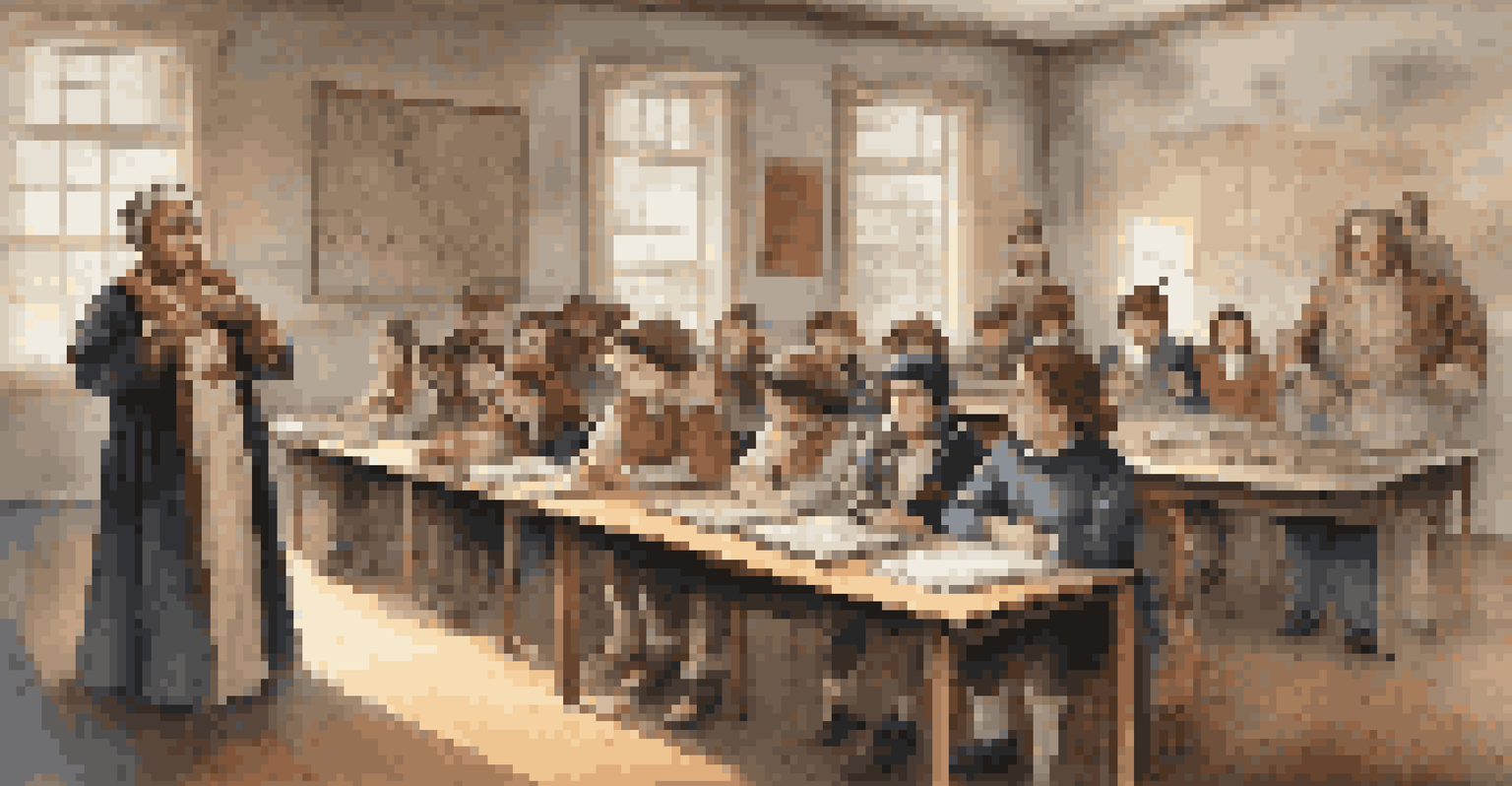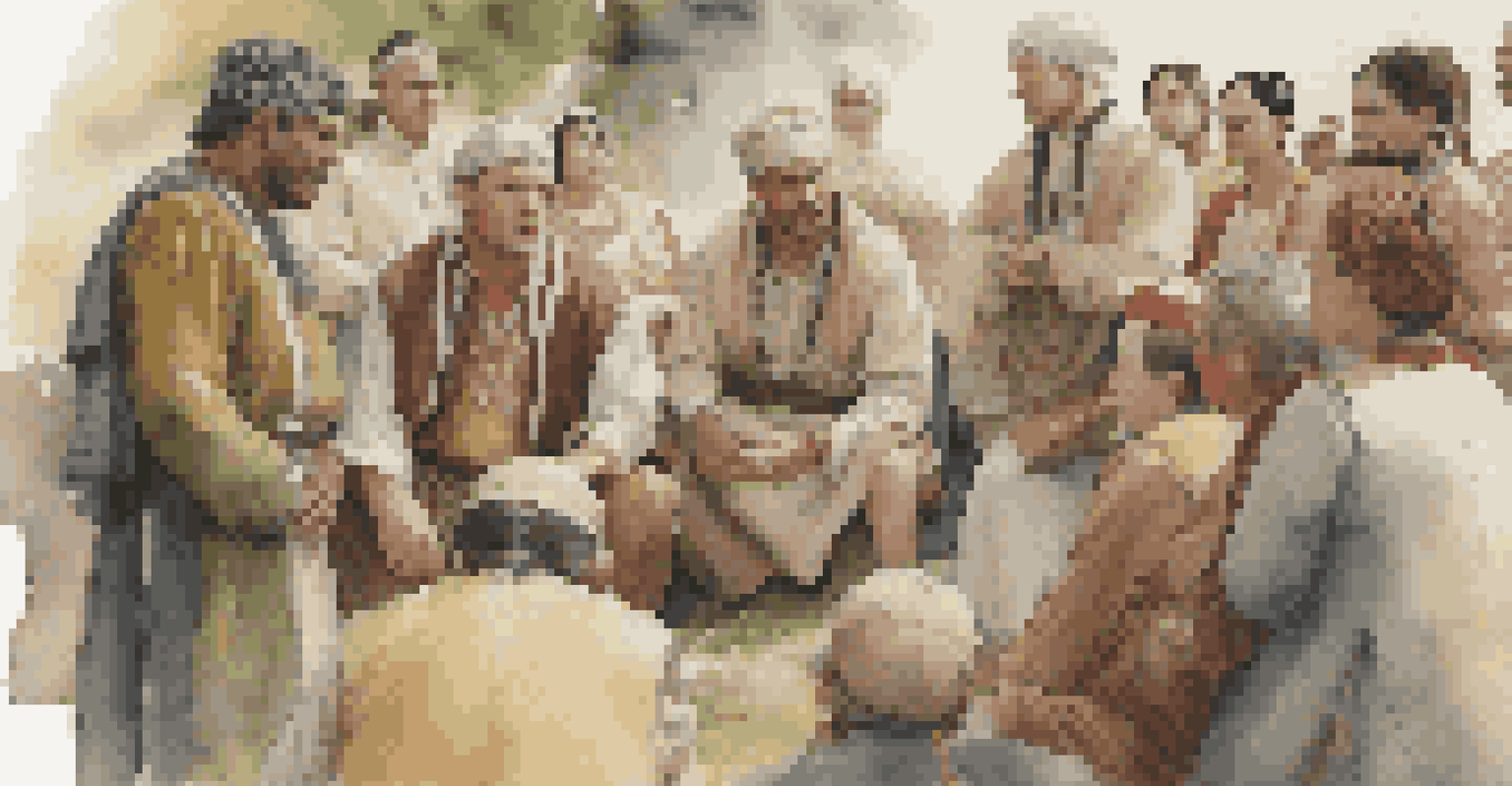Engaging the Public: Outreach in Historical Reenactments

Understanding the Importance of Public Engagement in Reenactments
Public engagement is crucial in historical reenactments as it helps to bring history to life. When people actively participate, they form a deeper connection with the past, making the experience more memorable. This connection can inspire interest in history and even encourage further exploration of historical topics.
History is not a burden on the memory but an illumination of the soul.
Moreover, engaging the public fosters community involvement and can create lasting relationships between reenactors and audience members. When participants see history unfold before them, they become more than just spectators; they become part of the story. This sense of involvement can lead to increased attendance at future events and a loyal following.
Ultimately, effective public engagement can transform a reenactment from a simple performance into a vibrant educational experience. By understanding the significance of public involvement, organizers can tailor their outreach strategies to ensure that everyone feels welcome and invested in the reenactment.
Creating Interactive Experiences for Spectators
One of the most effective ways to engage the public is by creating interactive experiences. This could involve allowing audience members to participate in demonstrations, such as historical cooking or crafting techniques. When spectators can touch, feel, and even create, they gain a richer understanding of the era being depicted.

Another approach is to incorporate storytelling elements that invite audience interaction. For example, reenactors could ask the audience questions or even invite them to make decisions that could influence the narrative. This kind of engagement not only entertains but also educates, as participants gain insights into the complexities of historical events.
Engaging the Public Enhances Events
Public participation transforms historical reenactments into memorable and educational experiences.
Additionally, using technology such as augmented reality can enhance the interactive experience. This modern twist allows attendees to visualize historical scenes or artifacts in a way that traditional methods cannot. By blending the past with innovative technology, reenactors can captivate and engage a wider audience.
Utilizing Social Media for Broader Outreach
In today's digital age, social media plays a vital role in outreach for historical reenactments. Platforms like Facebook, Instagram, and Twitter allow reenactment groups to connect with a broader audience, share event information, and showcase behind-the-scenes content. This not only builds anticipation but also creates a sense of community among followers.
Engaging with history is as important as knowing it; it is only through engagement that we can truly understand our past.
Engaging content, such as videos of rehearsals or interviews with reenactors, can also spark interest and attract new audiences. By using hashtags relevant to history and reenactments, groups can reach individuals who may not have been aware of the events otherwise. Social media serves as a powerful tool for building excitement and fostering connections.
Moreover, encouraging audience participation through social media can enhance engagement. For instance, asking followers to share their own historical interests or experiences related to the reenactment can create a dialogue that extends beyond the event itself. This ongoing engagement can lead to a more involved and invested audience.
Collaborating with Schools and Educational Institutions
Partnering with schools and educational institutions can significantly enhance public engagement in historical reenactments. By offering students the opportunity to participate in reenactments as part of their curriculum, educators can make history more tangible and relevant. These collaborations can also provide students with unique hands-on learning experiences.
Organizers can create special events tailored for students, incorporating lessons that align with their studies. This not only enriches the educational experience but also encourages families to attend, expanding the audience base. When schools promote these events, they help raise awareness within the community.
Technology Boosts Interaction
Incorporating technology like augmented reality creates immersive experiences that captivate audiences.
Additionally, engaging with educators can foster long-term relationships that benefit both parties. Historians, reenactors, and teachers can work together to develop engaging content that appeals to students and the public alike. Such collaborations can ensure that reenactments remain a valuable educational resource.
Incorporating Local History to Foster Community Ties
Integrating local history into reenactments can significantly enhance public engagement. By highlighting events or figures that are relevant to the community, reenactors can create a personal connection for attendees. This approach not only makes the event more relatable but also instills a sense of pride in local heritage.
Organizers can collaborate with local historians or community leaders to include stories that resonate with the audience. By showcasing the unique aspects of the community's past, reenactments can become a celebration of local culture and history. This fosters a greater sense of belonging and encourages community members to participate.
Moreover, emphasizing local history can attract a wider audience, including those who may not typically attend reenactments. When people see their own stories reflected in the events, they are more likely to engage and participate actively. This connection can turn a standard reenactment into a cherished community event.
Implementing Feedback Mechanisms for Continuous Improvement
To create engaging reenactments, it's essential to gather feedback from participants and attendees. Implementing feedback mechanisms, such as surveys or informal discussions, allows organizers to understand what worked well and what could be improved. This information is invaluable for refining future events.
Encouraging open dialogue with the audience not only demonstrates that their opinions are valued but also fosters a sense of community. When spectators feel heard, they are more likely to return and participate in future reenactments. This ongoing relationship can lead to a loyal audience that actively supports the events.
Diverse Narratives Foster Inclusion
Highlighting a variety of historical perspectives enriches the experience and encourages broader community engagement.
Additionally, analyzing feedback trends can reveal common themes and areas for enhancement. For instance, if many attendees express interest in specific historical topics, organizers can tailor future events to incorporate those themes. This adaptability ensures that reenactments remain relevant and engaging for all.
Celebrating Diversity in Historical Narratives
Incorporating diverse narratives into historical reenactments can significantly enhance public engagement. Representing a variety of perspectives allows attendees to gain a more comprehensive understanding of history. This inclusive approach not only enriches the experience but also acknowledges the multifaceted nature of historical events.
By showcasing stories from different cultures and communities, reenactors can attract a broader audience. For example, highlighting the contributions of underrepresented groups can resonate with diverse community members. This representation fosters a sense of belonging and encourages participation from those who may have previously felt excluded.

Moreover, emphasizing diverse narratives can inspire discussions about history's relevance today. When audiences see themselves reflected in these stories, they are more likely to engage critically with the material. This deeper connection can lead to meaningful conversations and a lasting interest in historical reenactments.